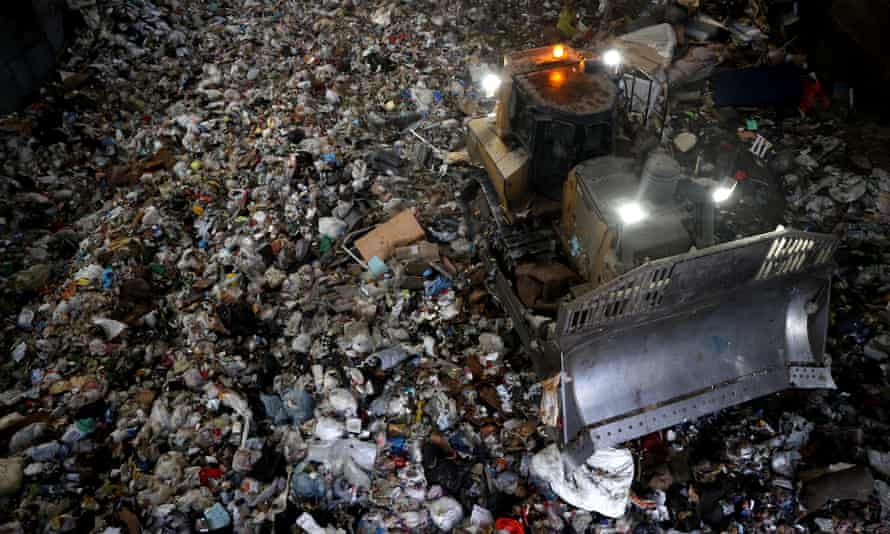California wants to eradicate microplastics. Will a new strategy be enough?

The 22-step plan includes preventing and intercepting plastic from entering waterways and educating about its hazards
Microplastics can be found everywhere, from waterways to fish to inside the human body’s soft tissues. And it’s only getting worse – 11m metric tons of plastic enter the planet’s oceans each year, an amount that is expected to triple by 2040.
California is trying to get ahead of the problem, becoming the first US state to put in place a comprehensive plan for tackling microplastics. The roadmap of 22 actions is focused on preventing plastic particles from getting into the environment, intercepting plastics pollution and educating the public about the problem.
Announcing the strategy last week, Wade Crowfoot, the state’s secretary of natural resources, underscored the urgency of the moment. “Microplastics are poisoning the ocean, both across the planet and off the California coast,” Crowfoot said in a statement. “We must take action.”
But with a problem of this enormity, will the intervention turn the tide? Research has found that California’s waterways are already saturated with microplastics, including an estimated 7tn pieces in the San Francisco bay alone, much of which washes in through stormwater drains. According to the California Ocean Protection Council, the top sources of microplastics are tires, synthetic textiles, cigarette filters and single-use plastic food-ware.
Some experts are hopeful. Andrew Gray, a watershed hydrologist at the University of California, Riverside, says that he thinks the new strategy is well aligned with the science as we know it now. Gray’s lab did some of the science that underlies the strategy.
The strategy is heavily focused on preventing plastics from getting into the environment in the first place. It recommends banning certain product materials, prioritizing reusability, and limiting single-use plastic. Other such preventative mechanisms include statewide purchasing of reusable food-ware, as well as a prohibition on the sale and distribution of expanded polystyrene food-ware and packaging by 2023.
Gray says this emphasis on prevention is critical, because cleaning up microplastics once they are in the environment is virtually impossible. “That’s where we are going to gain the most benefit at the end of the day.”
California’s plan comes as the pandemic has increased demand for single-use plastic, intensifying pressure on the environment, according to research published last fall. More than 8m tons of pandemic-associated plastic waste have been generated globally, with more than 25,000 tons entering the global ocean – mostly medical waste from hospitals. In addition, some legislation aimed at curbing plastic pollution was postponed, both nationally and in California.
But with life returning to a state of semi-normalcy, efforts appear to be getting back on track, Gray says. In November, California voters will have a chance to pass a ballot measure that would require all single-use plastic packaging, containers and utensils to be reusable, recyclable or compostable by 2030.
The state’s plan also has a focus on education – but not the message of personal responsibility that some people would imagine, says Gray. There has been a push by plastic producers to make people take on the burden of making sure plastics don’t enter the environment, but the idea here is that producers bear more responsibility, and people should know why. “Education basically means: we want people to understand why microplastics are potentially a large problem and how we can take steps before it gets worse.”
On the science side, the strategy focuses on monitoring how many microplastic particles are in different parts of the environment, which is critical because we need to understand what is in the environment and where it’s coming from, Gray says. Eventually, the goal is to develop microplastics budgets – allowable levels – for waterways and coastal oceans. The strategy will also retrofit stormwater infrastructure and stop companies from illegally discharging the tiny pellets that comprise the building blocks for most plastics.

California’s plan potentially points the way forward for the global community which is ringing the alarm about the dire state of plastic waste. On Monday, world leaders gathered at the United Nations Environment Assembly in Nairobi to agree on a global treaty to address plastic pollution.
“The total mass of plastics produced exceeds both the overall mass of all land and marine animals and the planetary boundary for these novel substances, moving us out of a safe operating space for humanity,” a group of scientists wrote in an op-ed for Environmental Health News. “Yet industry continues to project growth, investing billions of dollars in new infrastructure and opposing national and now international efforts to curb both plastic production and pollution.”
When it comes to California’s place in the world of combatting microplastics, Gray says that the state is working hard to make science-based decisions, adding that both Europe and the US are still in the early days of understanding the flow of plastic particles through the environment. “California is on the right track in terms of pushing ahead and being at the forefront, and this is being driven by science.”
